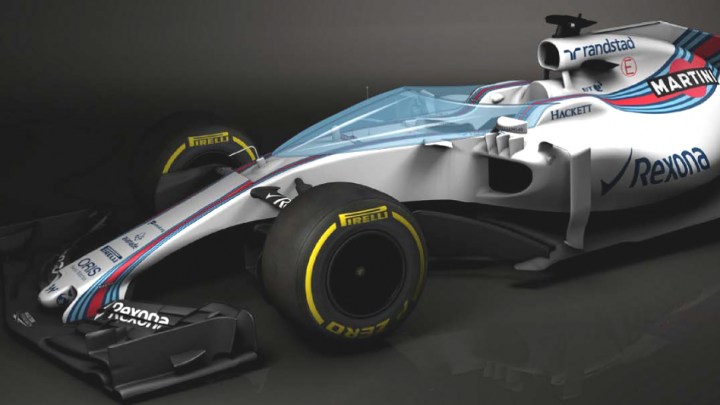
Ferrari will test a transparent cockpit “shield” at the British Grand Prix next weekend, the Federation Internationale de L’Automobile (FIA), F1’s government body, announced in a press release. The “shield” is meant to protect drivers’ heads from flying debris, part of an ongoing effort by the FIA to increase safety.
A digital rendering of the “shield” superimposed on a current F1 car posted on the FIA’s website shows something akin to the canopy on a fighter plane. A transparent polycarbonate windshield sits in front of the driver and wraps around the sides of the cockpit, leaving the top open. The FIA hopes to get driver feedback on the concept at next week’s British test, ahead of a larger-scale test at Italy’s Monza racetrack in September.
Driver head protection has received more attention over the past couple of years due to a pair of fatalities. In 2014, F1 driver Jules Bianchi sustained a serious head injury in 2014, and died months later. IndyCar driver Justin Wilson was struck in the head by flying debris at a race in 2015, and died from his injuries as well. As has happened numerous times in the history of racing, new safety tech is being pushed as a reaction to driver deaths.
But while protecting drivers is of the utmost importance, the FIA’s crusade to enclose F1 car cockpits has met with some resistance. Safety advocates have pointed out that an enclosure could make it harder for drivers to get out of the car in an emergency, or for first responders to reach them. Others simply don’t like the way new safety devices could change the look of the cars.
Aesthetics helped nix the FIA’s last attempt at extra cockpit protection. Known as the “halo,” it consisted of a hoop encircling the driver’s head, with a vertical bar at the front. It was tested last season, and the FIA even hoped to add it to an extensive list of rule changes for 2017. But drivers and teams weren’t enthusiastic about the concept.
It’s unclear how the latest cockpit “shield” will be received within F1, but it is already winning supporters outside the series. IndyCar plans to adopt a similar device in 2018, according to Motorsport.com, and the concept has already received endorsements from some of the series’ drivers.


